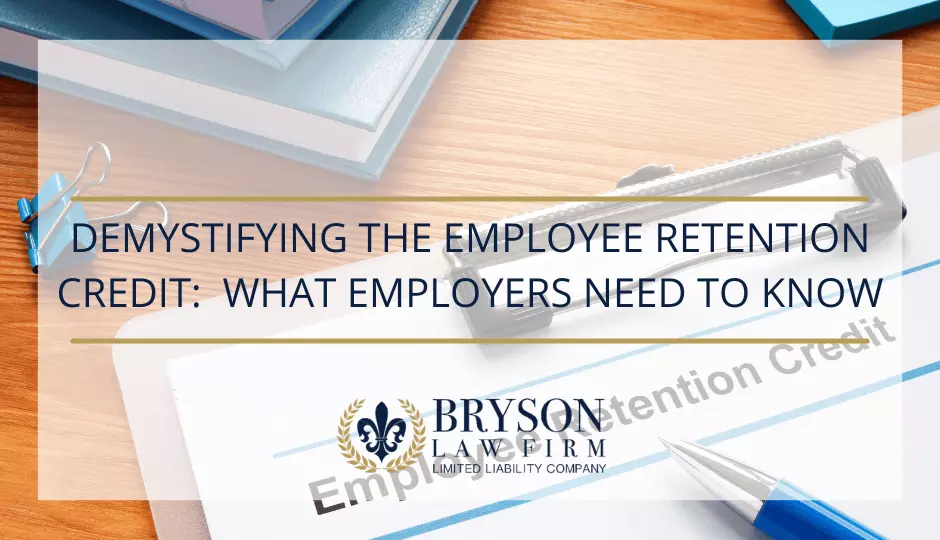If you were to do a quick internet search on the Employee Retention Credit you might find yourself with more questions than answers. Trying to navigate all the changes, eligibility criteria, and how this credit affects small business can feel overwhelming! So, let’s talk about everything you need to know about the Employee Retention Credit (ERC), also known as the Employee Retention Tax Credit (ERTC).
First, what is the ERC? Well, it is not a loan or a grant, and it does not have to be paid back. It is a tax credit for small business and tax-exempt organizations to help alleviate some of the financial strain that was directly caused by the COVID-19 Pandemic, specifically for those employers who continued to pay their W-2 employees during the qualifying quarters. The tax laws regarding the ERC have changed since it was first introduced which can make it difficult for employers to know if they are eligible. And if you own multiple businesses, it can be ever more confusing. Filing for the ERC can be a long process, but it doesn’t have to be a difficult one.
There are six quarters in which the ERC is available. Quarters two, three, and four of 2020, and quarters one, two, and three of 2021. And there are two ways to qualify for the ERC.
The first way to qualify is to determine if your business experienced revenue reduction during the qualifying quarters. For 2020, the business would need to show a 50% reduction in revenue compared to the same quarter in 2019. For 2021, the business would need to show a 20% reduction in revenue compared to the same quarter in 2019.
The second way to qualify would be if the government shutdown orders directly impacted your business’s ability to operate normally. For example, if the business was not able to operate during normal hours, you were not able to serve your customers in the same manner, or people were not allowed to enter your business, etc. You may also be able to qualify this way your business experienced supply chain disruptions during the qualifying quarters. These disruptions could have been caused, directly or indirectly, by government shutdown orders.
There are a few more things to keep in mind when determining if your business is eligible. For example, the ERC cannot be claimed for self-employed individuals, nor can it be claimed for employees who are related to the business owner. Also, while receiving one or more of the PPP loans doesn’t automatically disqualify your business from the ERC, you cannot use those wages to qualify. In other words, no double dipping. This is one of the bigger changes regarding the a business’s eligibility since originally a business could not apply for ERC if they had received a PPP Loan. Many businesses who we not eligible before, may be eligible now.
Once you have determined that your business is eligible for one or more of the qualifying quarters – it’s time to file, and to do that you must amend the corresponding 941. You will then have to wait for the IRS to accept or reject the amended document. This process can take up to 6 months. If the IRS accepts, you will receive a check in the mail for each quarter that your business was qualified and approved for. The size of your refund will depend on which quarters your business qualifies for and how many employees you had. A lot of companies are making big promises of $26,000 per employee, but the truth isn’t quite that simple. While there is the potential for $26,000 per employee, your business would have to qualify for all quarters. The maximum credit is $5,000 total per employee for 2020, and $7,000 for each quarter per employee for 2021.






















